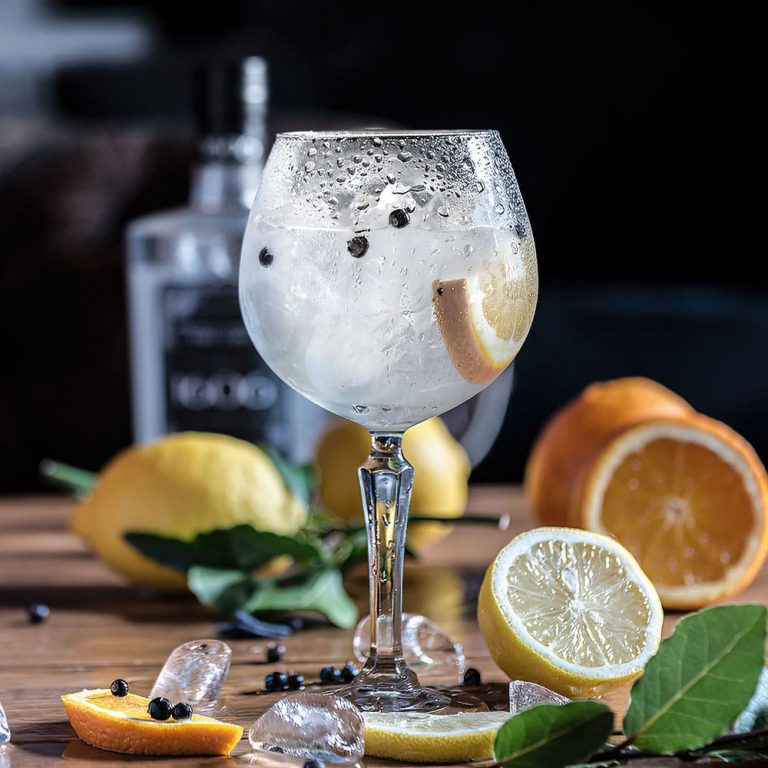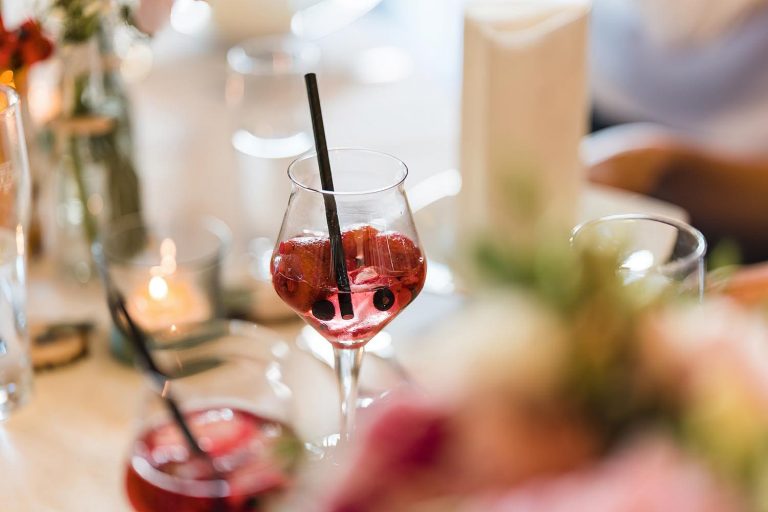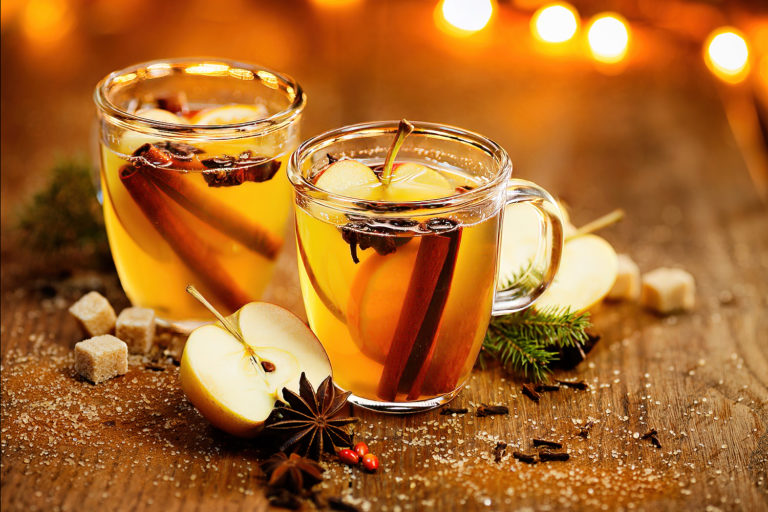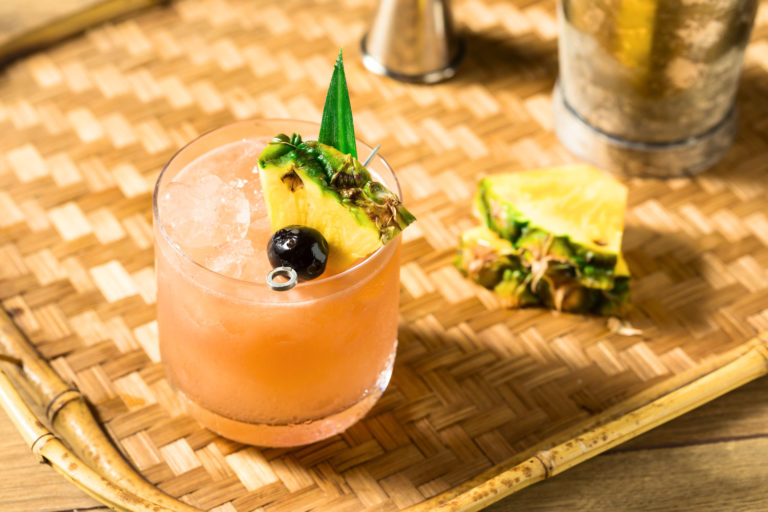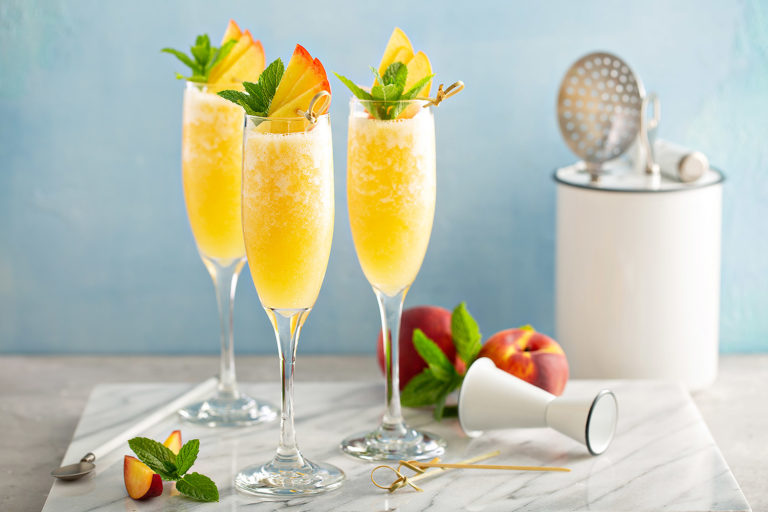The right mixing ratio: how to prepare the perfect gin & tonic
One thing right away: The perfect ratio of gin to tonic water does not exist. Some like their gin and tonic with just a shot of tonic water, while others dump the whole bottle (250 ml) directly into their glass.
Therefore, you should see the recipe above only as a rough guide and adapt it to your own taste and to the components used.
Preis inkl. MwSt., ggf. zzgl. Versandkosten / Letzte Aktualisierung am 2025-05-11 / Affiliate Links / Bildquelle: Amazon Product Advertising API
True gin enthusiasts adjust their mixing ratio to the gin they use. The goal of a perfect gin and tonic is always the same: To preserve the flavor of the gin and complement it with the aroma of the tonic water. Neither component should dominate the other.
The perfect mixing ratio is therefore always dependent on your gin and filler. Therefore, feel your way slowly and gradually add some tonic water until you find the perfect ratio.
Three rough mnemonics are:
- Light gins prefer with less tonic, so as not to overpower the gin
- Noble gins rather with less tonic to emphasize the gin
- Aromatic gins with more tonic to balance the long drink.
Which tonic water goes with my gin?
A classic gin and tonic consists to a large extent of tonic water. This fact alone should show that the quality of the filler is a factor that should not be underestimated. There are now countless gins, and they are joined by an equally large number of tonic waters.
The principles for choosing the right tonic water
As with the mix ratio, you can find the perfect tonic water for any gin you encounter with a few basic rules. Before you prepare your G&T, you should know your gin and for that you must first taste it neat.
Afterwards, you can look at the following characteristics of your tonic waters and decide on the best possible candidate that fits the character of your gin.
Preis inkl. MwSt., ggf. zzgl. Versandkosten / Letzte Aktualisierung am 2025-05-11 / Affiliate Links / Bildquelle: Amazon Product Advertising API
A tip for beginners: like and like like each other, also with the gin and tonic! With a tonic water that has many similarities to your gin, you’re almost always on the right track.
- little vs. much carbonic acid
You should always serve a light gin with a low-carb tonic water, while aroma bombs (e.g., gin) should always be served with a low-carb tonic water. B. Monkey 47 Schwarzwald Dry Gin – Harmonischer Ultra Premium Gin mit Wacholderaroma & frischen Zitronen- und Fruchtnoten – 1 x 0,5 L | 500 ml (1er Pack)* ) can tolerate significantly more carbon dioxide. The reason: the carbonic acid significantly reduces the taste impression. - bitter vs. mild
Mild tonics complement a delicate and light gin without overpowering it. A slightly cloying (yes, there is such a thing) gin, benefits from a tonic with a distinct bitterness. - fruity vs. floral vs. spicy aromas
First, orient yourself to the flavors of your gin. You don’t want to smother a floral gin with a spicy tonic. - dry (dry) vs. sweet
A “sweet” tonic can give a bitter gin a significant boost and make it appear in a completely different light. However, you should always mix fine and noble gins with a dry tonic water to avoid distorting their flavors. - filigree vs. strong taste
In the end, it’s always about finding the best possible balance. Light gins literally break under the aromatic weight of a strong tonic water.
How do I serve a gin and tonic?
Just over a decade ago, a gin and tonic was one of the easiest things to order at the bar. In the glass, you usually got a Bombay Sapphire and the cheapest tonic water possible. The requirements for the beverage were more effect-oriented and not of a taste nature.
With the new wave of gin in the 2010s, this was to change considerably. The gin and tonic has become a true lifestyle drink and its aficionados have come to expect an appropriate presentation. For this reason, here are some tips on how to best serve your gin and tonic.
The right glass for your gin and tonic
As a highball, a classic gin and tonic clearly belongs in a long drink glass with the right capacity. My personal favorite here are the crystal glasses of the Noblesse series from Spiegelau & Nachtmann. With its just under 380 ml capacity, you have enough space for gin, tonic water and enough ice.
Preis inkl. MwSt., ggf. zzgl. Versandkosten / Letzte Aktualisierung am 2025-05-28 / Affiliate Links / Bildquelle: Amazon Product Advertising API
For some time now, the gin and tonic can also be found in so-called Coppa glasses. The bulbous glasses, reminiscent of red wine goblets, with 650 ml capacity, offer enough space for elaborate garnishes and give the drink a certain Mediterranean lightness and elegance. Especially in summer, these glasses have a certain advantage, because you can touch them by the style and put a larger ice cream scoop in it. Both will keep your G&T cold longer. Once again, I find the Gin & Tonic series from Spiegelau & Nachtmann very successful.
For more refined gins that need only a little tonic water, it’s best to reach for an Old Fashioned glass. Because in a tall long drink glass, your drink would look a bit lost. At the same time, the smaller glass also emphasizes the value of the drink. Such a gin and tonic is sipped rather than drunk in full gulps.
The right garnish for your gin & tonic
As mentioned in the recipe, the choice of garnish for your gin and tonic is not for the eye, but forms the third flavor source for your drink, along with the tonic water.
When choosing your garnish, you should therefore always consider whether you want to emphasize a certain flavor in the gin or tonic water with your garnish (harmony) or expand it with a new component (contrast).
Classic: Pure & Naked!
In fact, a classic G&T is served without garnish, so naked! Here, the focus is on the pure aroma of the spirit and the filler. Nothing should get in his way. It looks a bit drab and in a bar, you should really only leave out the garnish if the guest explicitly requests it. After all, the eye drinks with you.
Post-classic: citrus peel
You can never go wrong with a lime zest in a juniper-infused gin and tonic. In fact, juniper and lime share some of the same aroma compounds, which is why they make a wonderful combination. Lime zest makes the drink seem even fresher, while orange zest is wonderful for a Christmas gin and tonic with spicy notes (such as cardamom).
The cucumber fiasco
In almost every second gin and tonic you will find a slice of cucumber cut with a peeler. However, the green vegetables are only really useful in exceptional cases, for example, when the gin used has already been flavored with cucumbers during production. In all other gins, however, the cucumber masks much of the gin flavor and should rather be enjoyed in a salad. Nevertheless, the rule always applies here: what is allowed is what pleases.
Herbs & Spices
Probably the most extravagant garnish for a gin & tonic is clearly the use of matching(!) herbs and spices. Here, rosemary, lavender, thyme and cardamom play a particularly important role. But anyone who now reaches wildly into the spice rack will quickly discover that this is a delicate matter. So, a cinnamon stick and some cardamon will quickly turn your G&T into a Christmas nightmare during that summer pool party.
The history of the gin and tonic
The gin and tonic was very likely invented by the officers of the Presidency Army of the East India Company on the Indian subcontinent. Quinine was already then considered a traditional medicine for the prevention of malaria and was therefore given to soldiers as a tonic. However, the taste of this solution was so abominably bitter that in the early 19th century they began to mix their medicine with water, sugar and gin to make it somehow edible. Thus was born the predecessor of what is now probably the most popular cocktail in the world – the gin and tonic.
The fact that the officers at the time resorted to gin, of all things, is quite easy to explain. At that time, this was an integral part of their food rations and was thus widely used.
Today’s tonic water no longer has much in common with the Marlari remedy of the time. It contains significantly less quinine, is usually heavily sweetened and therefore much less bitter.
